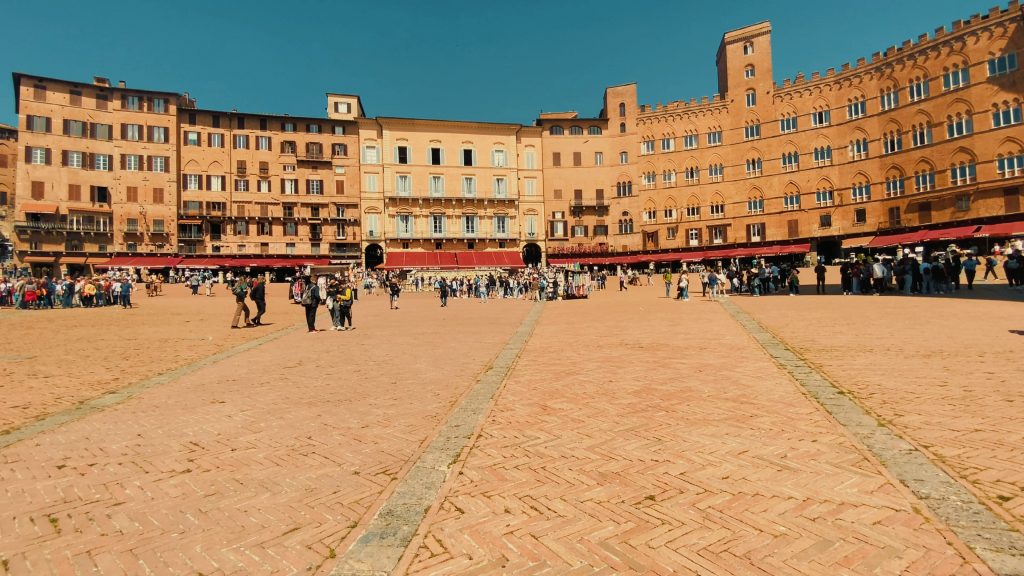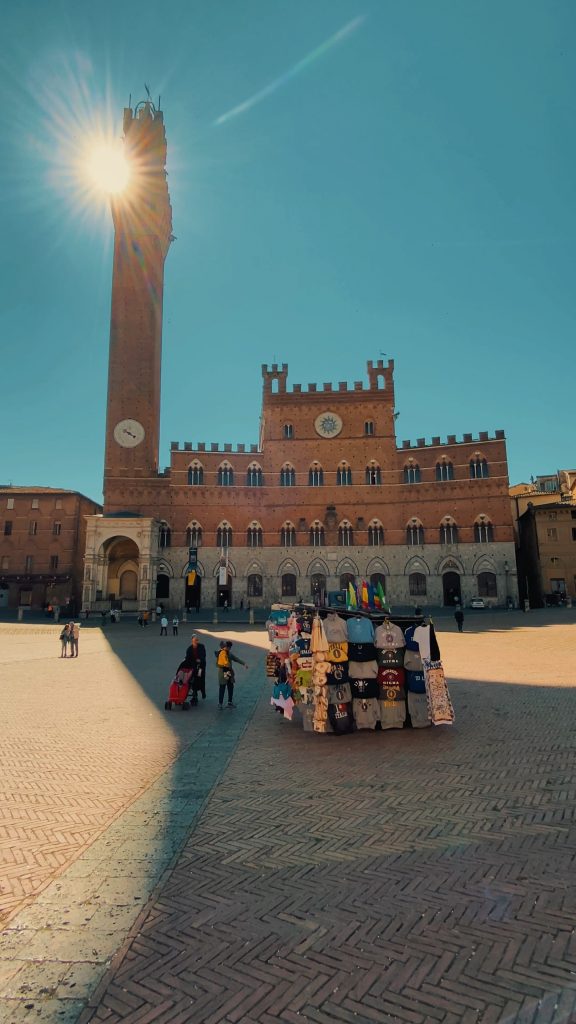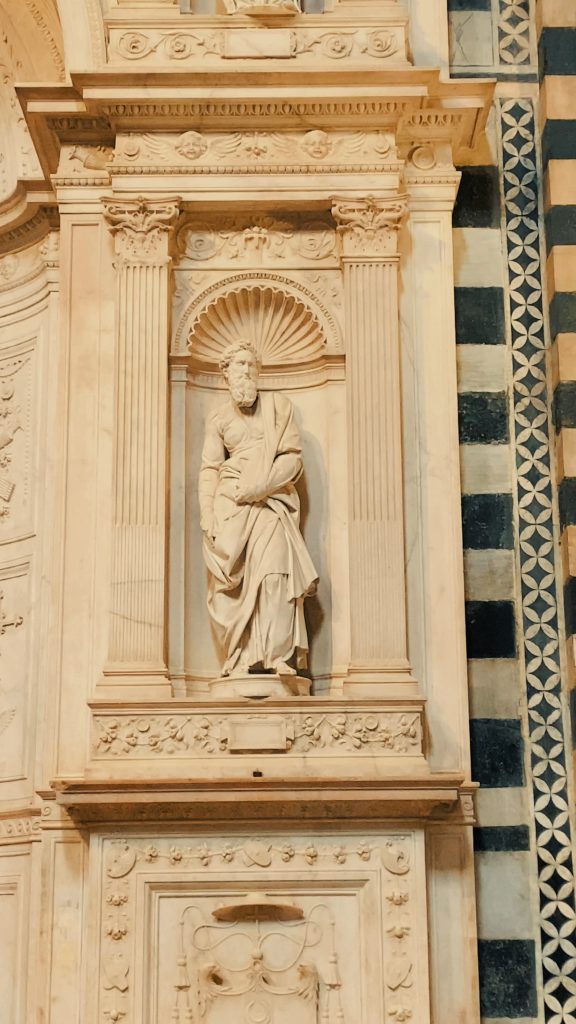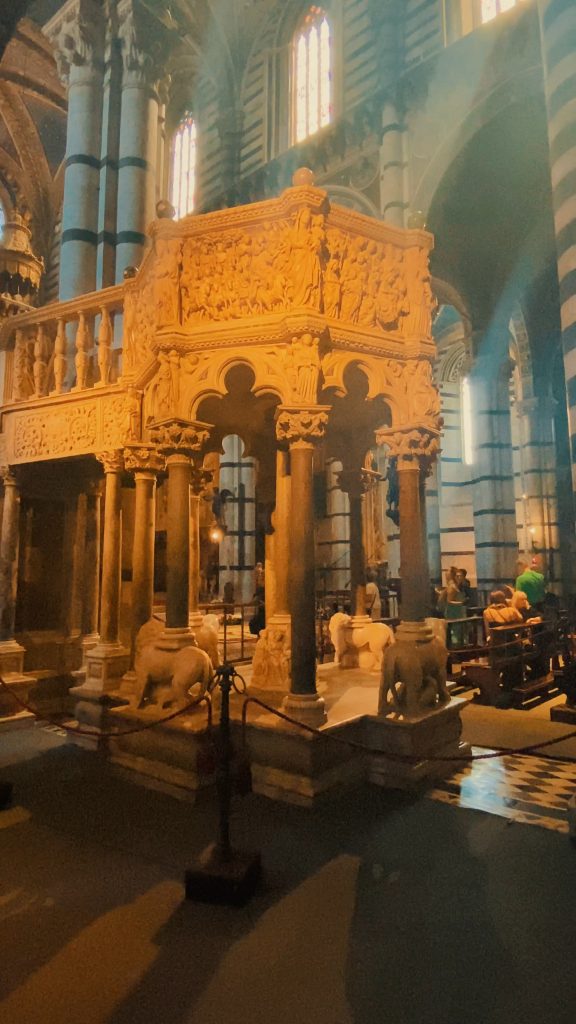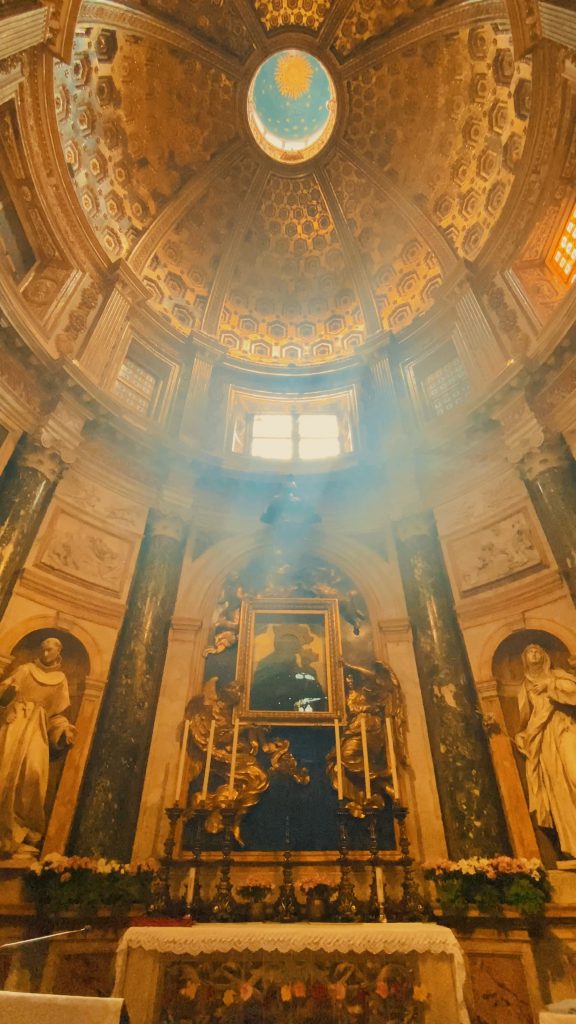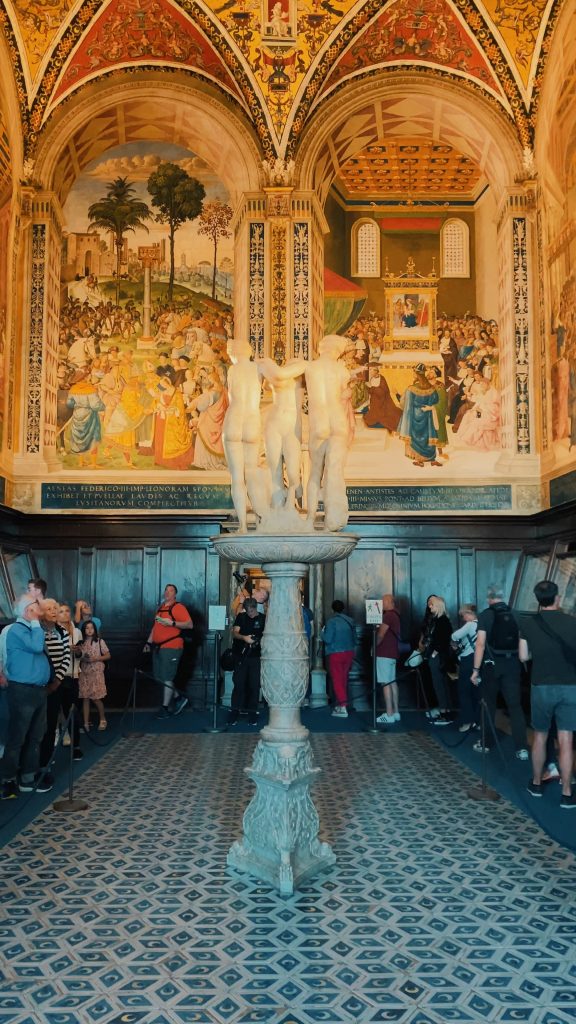Half day in Siena: what to see.
You are in Tuscany and among the many villages and cities of art you know that a stop in Siena is a must! After all, you can’t miss the city of the Palio, the city that still retains the urban layout of the Middle Ages, the city of St. Catherine, and the greatest exponents of Gothic art.
You’ve already guessed that there’s so much to see in Siena, and if you want to do it right, you’d need at least two days to get to know the most iconic places and the most famous treasures that make this city unique.
But don’t worry, in half a day you can still get to know and discover what you need to fall in love with this city, and who knows, maybe you’ll decide to return to get to know it even better…
So, how about getting started?
Let’s start with the heart of the city, Piazza del Campo. The Piazza, overlooked by the Palazzo Pubblico with its tower, the Torre del Mangia, is the place where the Palio is held twice a year. But it is also the place that has witnessed many historical events that have affected the city.
gallery
You’ll notice a kind of marble basin at the top of the Piazza, that’s the Fonte Gaia, the work of the Sienese artist Jacopo della Quercia, who together with Ghiberti and Brunelleschi participated in 1401 in the competition for the doors of the Baptistery of Florence. This event symbolically marked the beginning of the Renaissance.
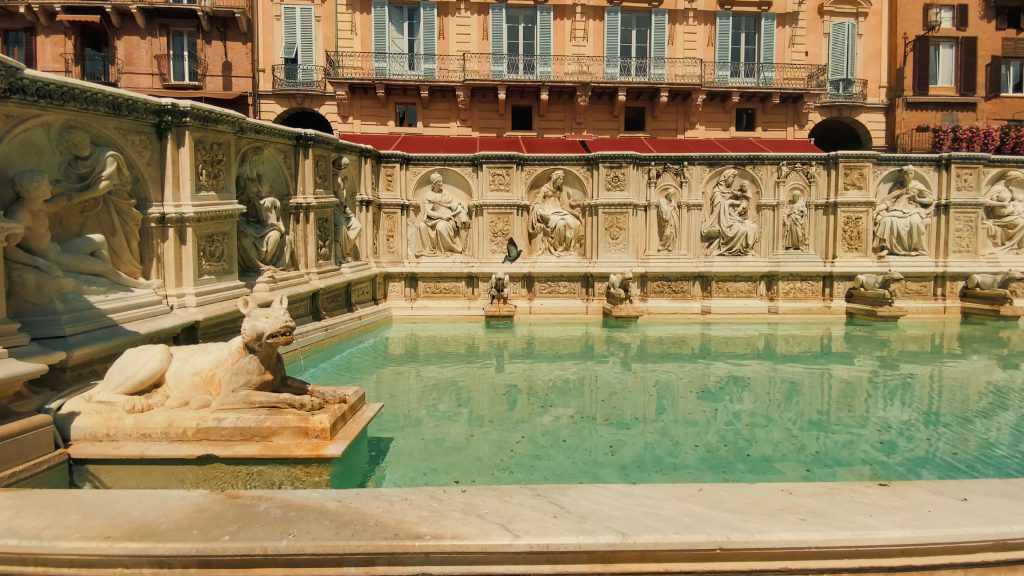
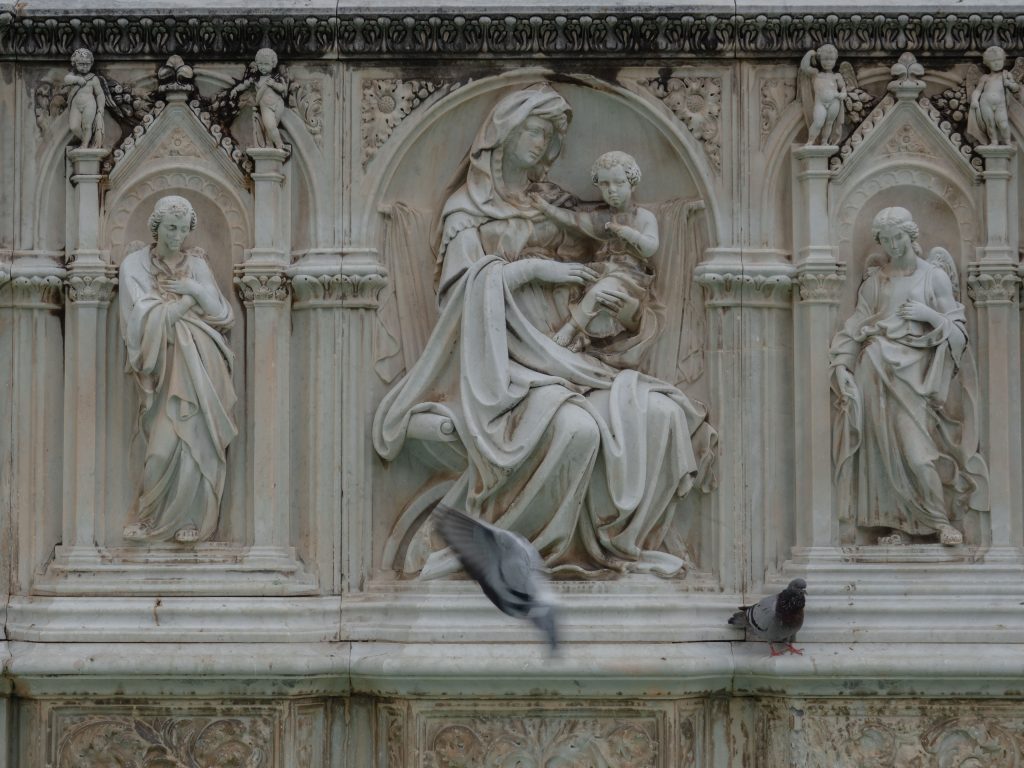
As mentioned earlier, the magnificent palace that still retains its Gothic nature is the Palazzo Pubblico, which has housed government offices since the Middle Ages and even today, one part still fulfills this task.
One part, on the other hand, houses the Museo Civico, the Teatro dei Rinnovati, and other spaces dedicated to exhibitions.
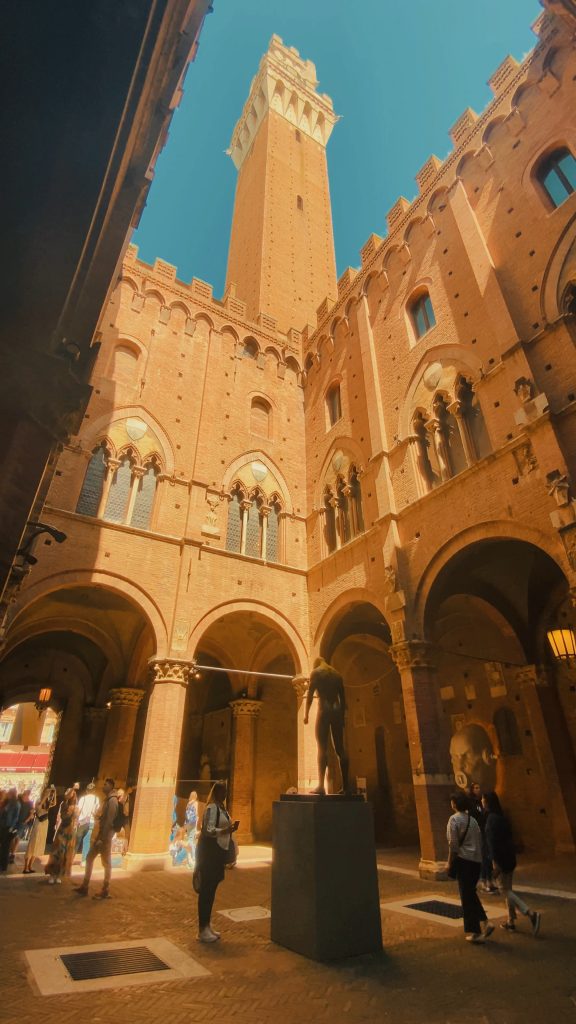
The Torre del Mangia on the other hand, almost 289 feet high, has this strange name thanks to the first bell-ringer, Guido di Balduccio, who being famous in spending all his money in taverns drinking, eating and who knows what else, was nicknamed by the Sienese the “Mangia Guadagni” (Wage eater), for friends just “Mangia.”
At this point, I suggest you go take a look at the charming Cortile del Podestà, which the Sienese call “Entrone.” Surely, if you look on the ground, you can still see the remains of the yellow earth that is put here, like around Piazza del Campo during the Palio. In fact, this is where the 10 horses are kept before the race.
Surely, as you look around, you will notice a she-wolf nursing twins.
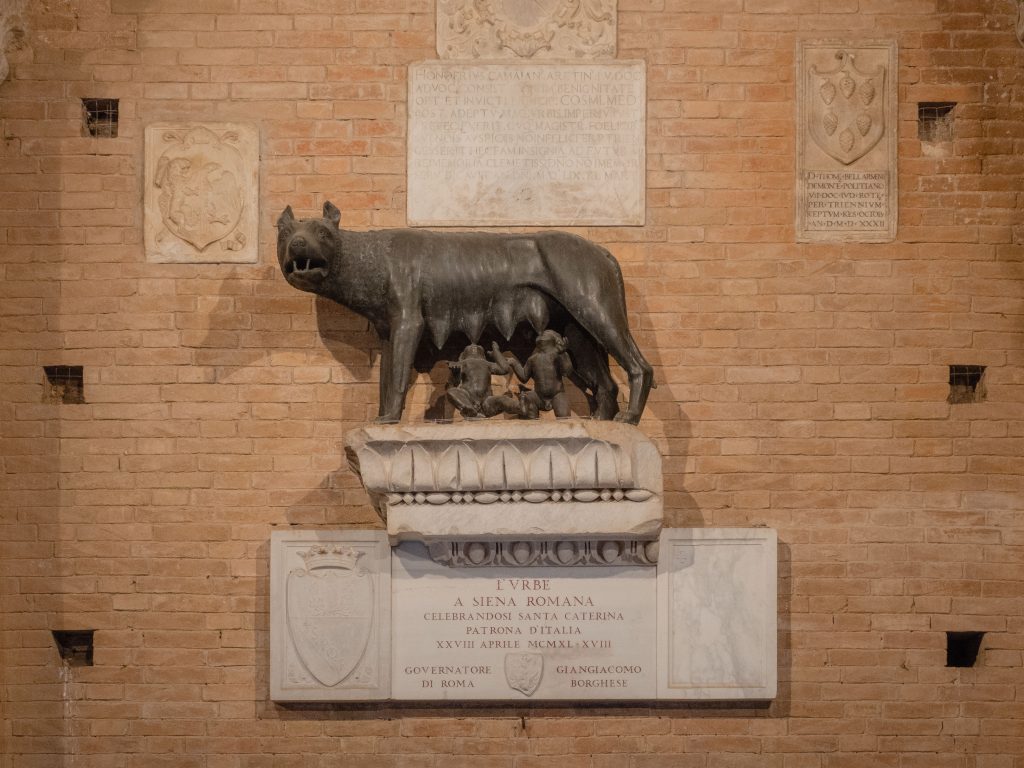
If you know the history of Rome you cannot help but exclaim, “what are Romulus and Remus doing here?” Well, yes, they fit, they fit … because according to Sienese legend Remus had twins, Ascanio or Aschio and Senio, who had to flee Rome because their uncle, Romulus, wanted to kill them. Before they escaped, however, they stole the statue of the Capitoline She-wolf and after a long journey on horseback found refuge near Siena. Senio was to be the one who founded the city of Siena.
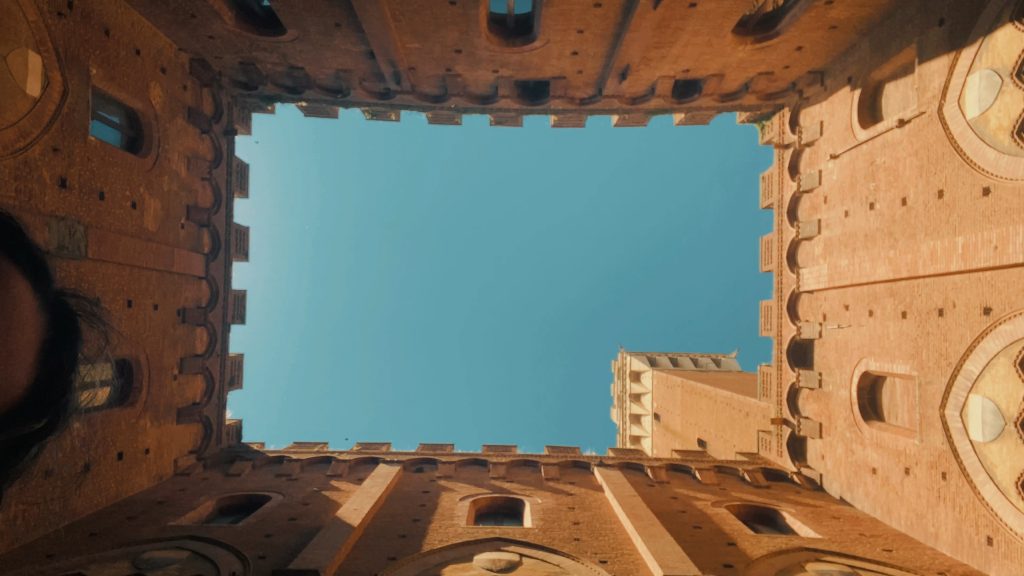
Well, now that you know the seat, the spaces, of civic power let’s go take a look at the Cathedral as well as the seat of religious power.
You will most likely walk down Via dei Pellegrini. At the end of the street, you will be overwhelmed by the magnificence of the marble of the Baptistery.
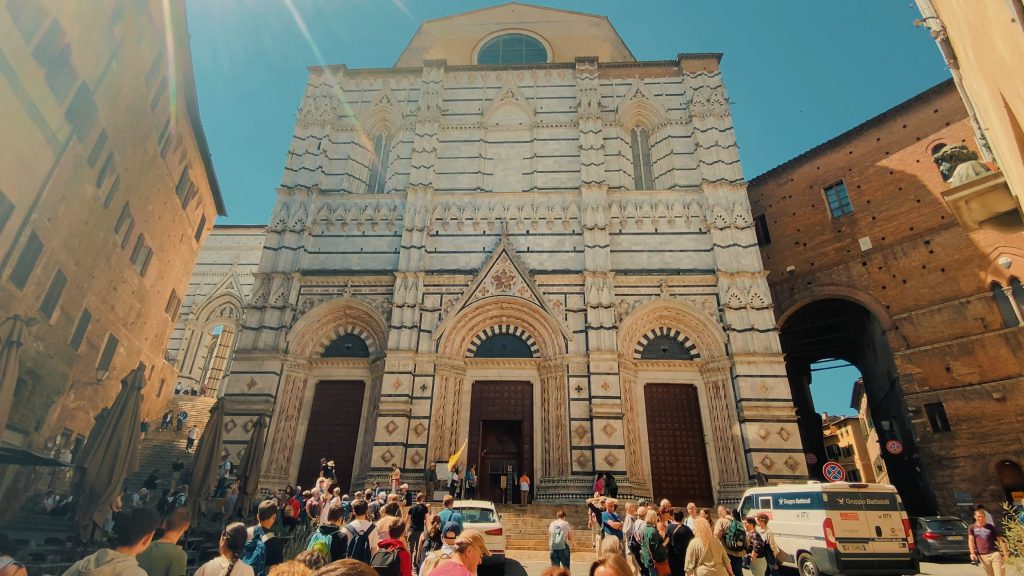
On the left side of this building you will find a flight of steps. I know, I know, you’re on vacation and don’t feel like working out, but I assure you it’s worth it, both because it’s a picturesque sight and because here, St. Catherine fell pushed by the Devil. The point of the incident is marked by a cross engraved on a step: 10 points to the one who finds it first!!!
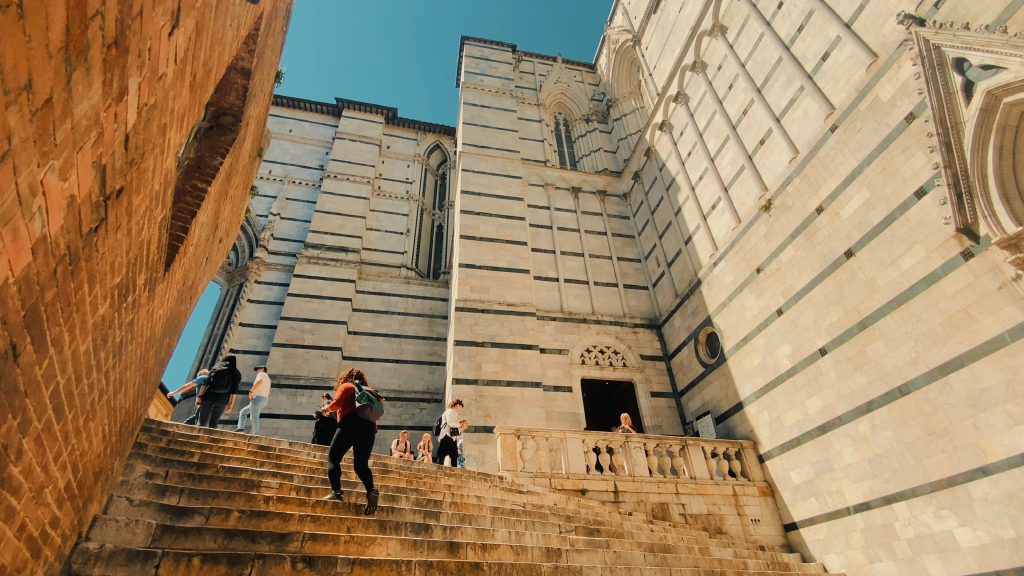
Climb to the top, pass through the Gothic portal, and you will find yourself in Jacopo della Quercia Square. You will be surrounded by unfinished structures. These were part of the Duomo Nuovo (New Cathedral) project, which unfortunately due to the plague of 1348 and other financial and structural reasons was never completed.

Keep walking and in front of you you will see a building, made entirely of brick, this building is Santa Maria della Scala, one of the oldest hospitals in Europe. Today it is a museum.
Now stand between the hospital and the cathedral, maybe rest by sitting on a so-called street bench (but watch out for pigeon gifts!) and admire the wonder of the façade, which, that alone, is a masterpiece. Partially designed and decorated by the undisputed genius of Giovanni Pisano. Famous are the statues that decorate the first register, those above the portals. They represent philosophers, prophets and sibyls: statues for the first time untethered from the architecture, free to move, to dialogue with each other.
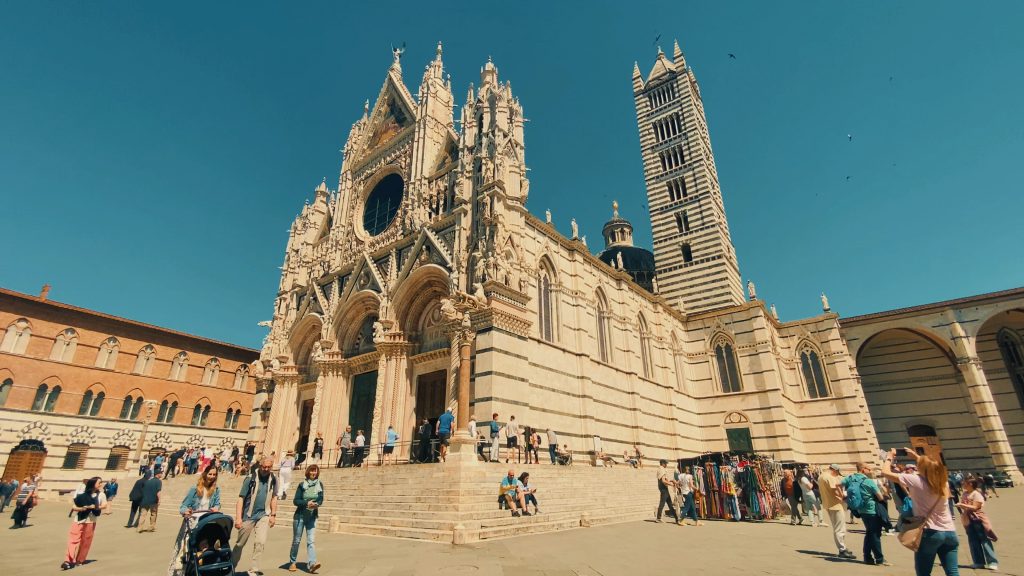
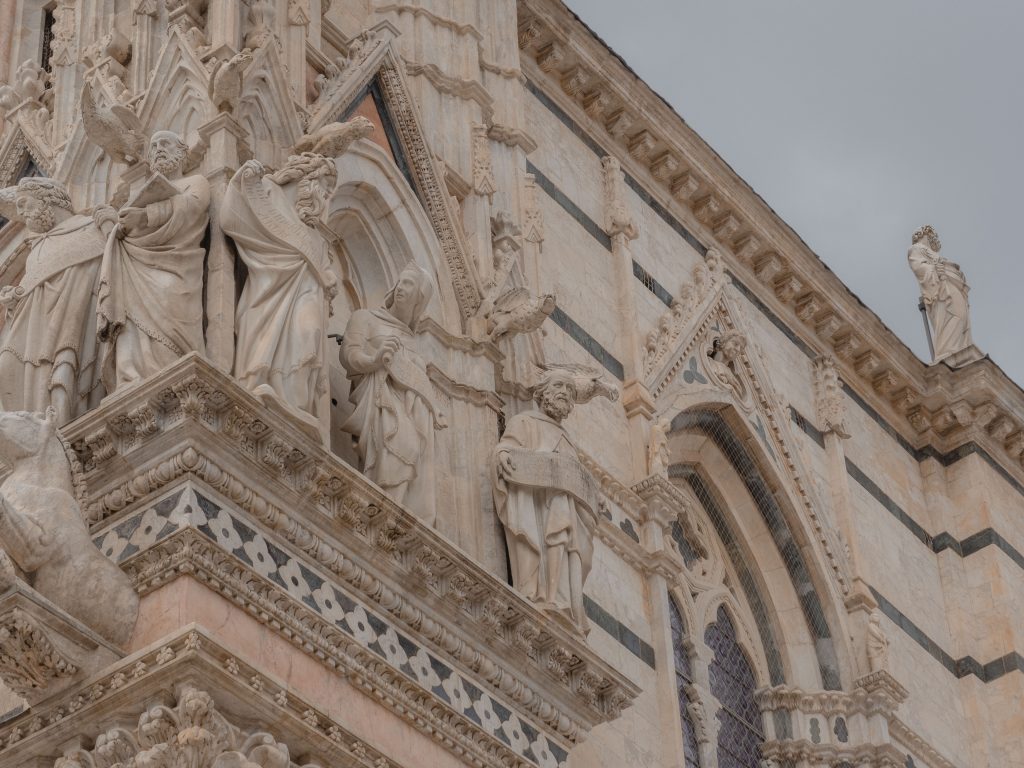
At this point I strongly recommend that you buy your ticket and enter the Cathedral because here you will find unique treasures such as, first of all, the floor, which is unique but unfortunately is not always uncovered, it is only at a certain time of the year (June 27 to October 18). I always suggest you first take a look at the site where among other things you can buy a ticket.
In addition to the floor here you will find statues commissioned from Michelangelo, the Piccolomini Library entirely frescoed by Pinturicchio and, probably by his pupil Raphael. Two works by Donatello, a tomb slab and the wonderful statue of St. John the Baptist inside the chapel of the same name. You will surely be enchanted by the richness and beauty of the pulpit commissioned from Nicola Pisano with the collaboration of his son Giovanni and the famous Arnolfo di Cambio. It was realized between 1265 and 1268. The list of must-see works in the cathedral ends with a visit to the Chapel of the Madonna del Voto, one of the most sacred places for the Sienese who are wont to pray in front of the medieval Madonna painted by Dietisalvi di Speme, a panel that is found in a Baroque frame, as is the entire chapel for that matter, designed by Gian Lorenzo Bernini. Yes, I already know what you will think, that this church is very rich in marvels! And you are right!
Leaving the cathedral take Via dei Fusari then, turn left onto Via Diacceto. Here you will find one of the most beautiful viewpoints in Siena. In the distance you will glimpse a church. That is where you will be headed, which is to the Basilica of San Domenico.
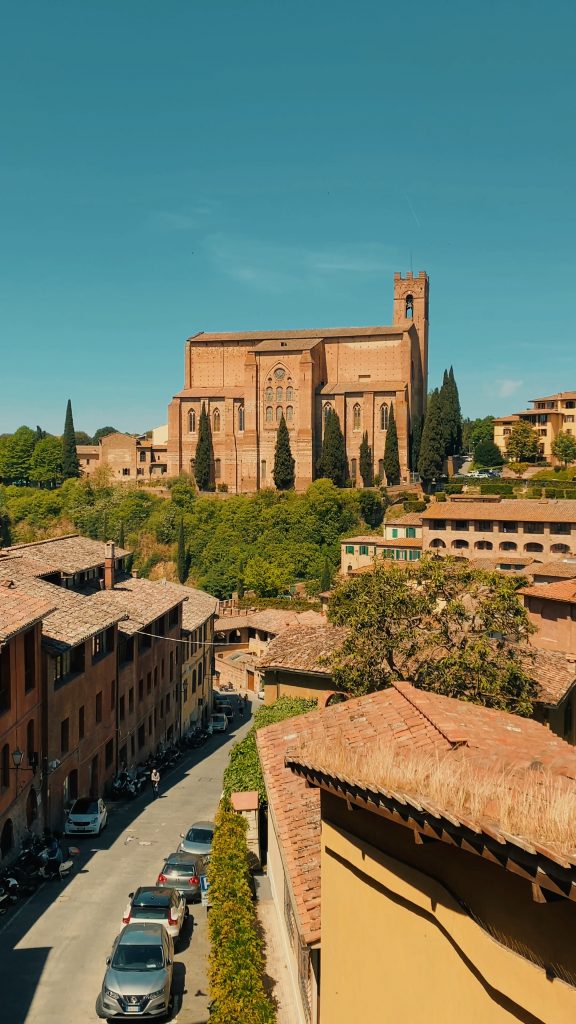
It is important to Siena because its saint, Catherine, took her vows here, and her relics are also kept in this church.
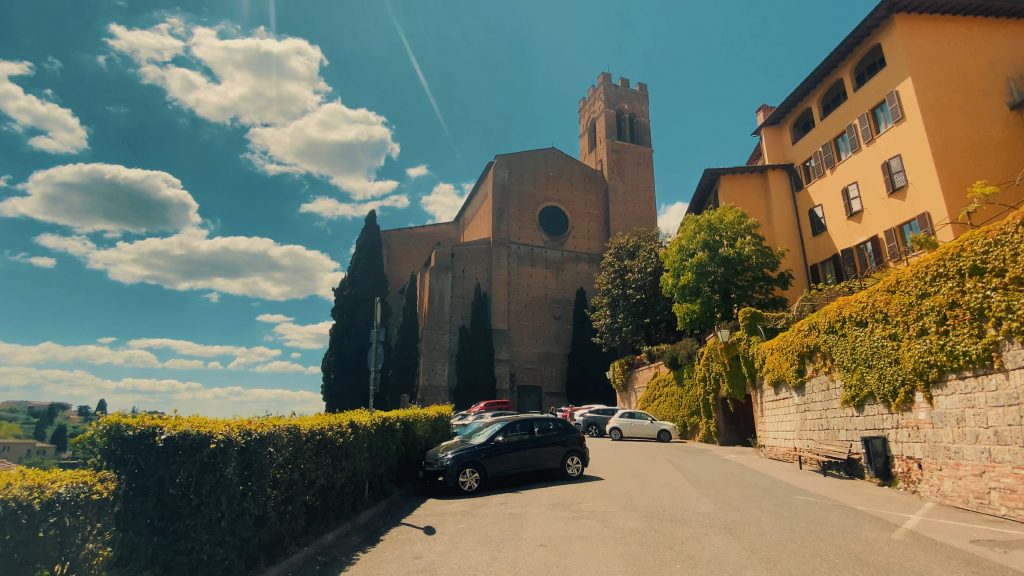
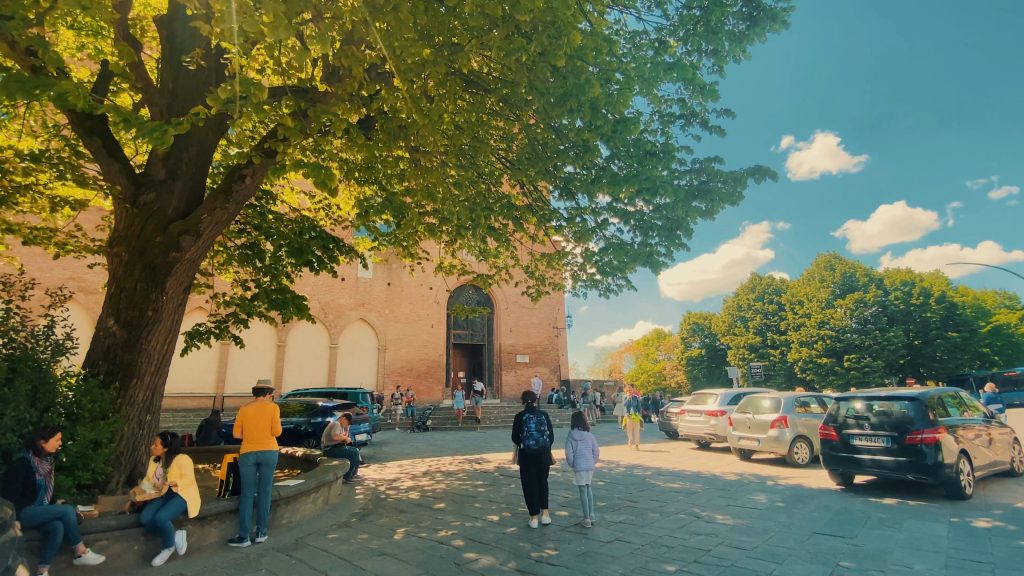
Believers or not this is an important figure for the Catholic church as well as a very interesting subject. You can find out some facts about his fascinating life in this talk, by a leading Italian historian, Alessandro Barbero, by activating the English subtitles.
Once the visit is over, your half-day is also over, and I think you have just those 10 minutes left to enjoy a good gelato at the gelateria near the basilica, Gelateria il Masgalano, perhaps sitting in the shade of the beautiful tree in front of the entrance to the Basilica.
First, though, don’t forget to walk down the stairs to one of Siena’s most beautiful viewpoints.
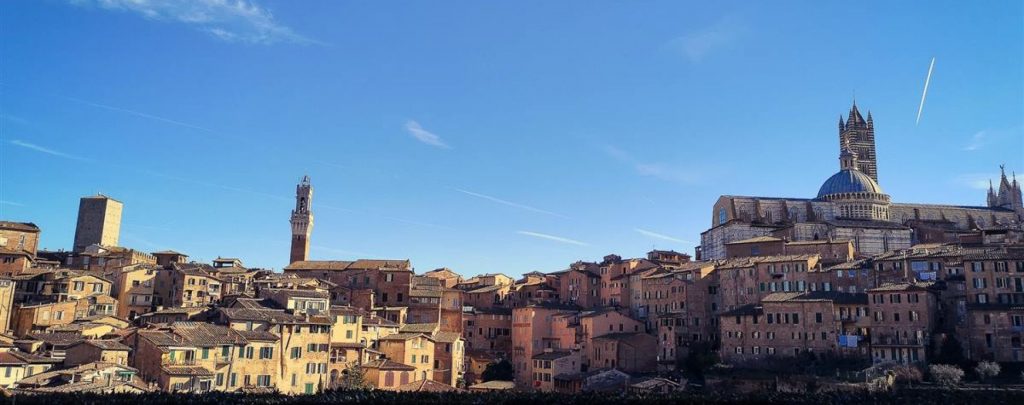
With this mini guide, you have known the most emblematic places par excellence but there are many others, equally fascinating but unfortunately to visit them you have to return! He he!
Joking aside I hope this post is useful to you and that at the end of this half day Siena has remained in your heart.
